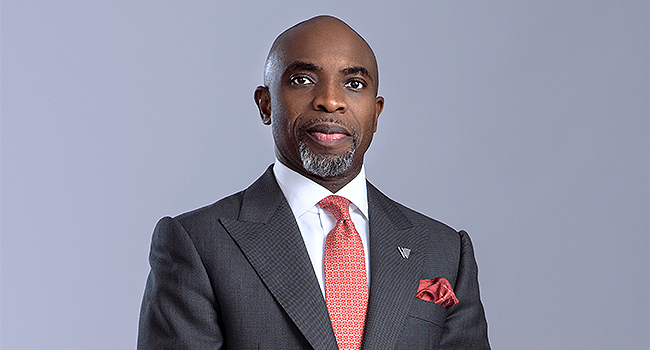Wema: A Bank On the Treadmill For Too Long

On the face value ,one may be tempted to tag Wema Bank Plc a corporate champion , particularly when some growth in its performance indicators are measured with a year on year yardstick in 2022 . .Between 2021 and 2022 its gross earnings , profit before tax ,profit after tax ,total deposits , total assets and total Loans took a double-digit upward flight by 42%,19%, 26% ,23% and 24% respectively .This was not accidental ,it has remained the trend in the bank in the recent time ,at least , when its latest performance indicators are bench marked year on year basis. ..
From the above perspective , the strategic position or brand’s value of Wema Bank may be considered highly impressive . To create this perception , this is usually tactically done without any reference to the industry or sector performance or best in class figures by its top management .Excited by this standard of measuring its achievement or success , it usually sells this dummy to its customers and investors yearly . In 2022 financial year , the management noted the bank had sustained revenue growth across all its income lines, improved its asset utilization and efficiency resulting to higher returns despite the worsening macro-economic headwinds. Excited by the feat, the management of Wema Bank believed it has delivered a better value for money to its stakeholders , particularly its investors .
Paradoxically , while the above performance indicators signal a feat , it s as well a ruse .For a well informed and critical investor or stakeholder , a good performance or health is beyond the above .To clearly ascertain where a company belongs in its industry or its health status , there are certain critical things usually looked for to adjudge a corporate entity a clean bill of health and competitiveness
To truly ascertain the health and competitiveness of any corporate organisation analysts and investors usually look for the criteria and benchmarks by which progress is being measured ,track record of new business creation, dreams and fears on the faces of employees ,company’s ability to shape the future and regenerate success again and again in the years and decades to come when one looks into its future,among others .In a nutshell , they ask themselves : is this company competing for the future or competitive and delivering a better value for money ? By this , they could conclude whether it is a champion or a laggard .
One of the above criteria that exposes where Wema Bank really belongs in the banking industry is the criterion or benchmark by which its progress is being measured. There are different bases for bench marking performance .These include historical comparison ,industry (sector) norms and best in class beyond the industry in which an organization currently operates
As could be seen in the analysis of its 2022 results , Wema Bank appears to prefer the first which looks at the performance of an organization in relation to previous years in order to identify any significant changes. However , the danger in it preference above is that it could lead to complacency since it is the rate of improvement compared with that of competitors that is important. That is not all .Less informed investors could be deceived by such an analysis based on that standard or criterion as regards what actually is the true position of such a company relative to its competitors.
This danger is not unknown to the management of Wema Bank , though the trick is not limited to this bank alone as many corporate entities are known to be hiding under this criterion either by commission or omission to cover up their real status or competitiveness .Analysts believe the choice of historical comparison could be disingenuous; in fact , it is often believed that this is a deliberate effort by the management to cover up its weakness relative to its rivals and to make brand more attractive to its gullible stakeholders .
This may not be farfetched as other bench marking standards are what potential investors need to uncover what is covered by any organization that deliberately shy away from other standards highlighted above.
This is indisputable .When Wema Bank performance indicators over years are juxtaposed with its competitors and the best in class standards , the bank’s uninspiring strategic position ,no doubt, becomes clearer .Even its so called supersonic performance in the 2022 and half 2023 for instance is exposed to be a mere ruse when bench marked with the industry or sector morns or best in class figures. .
In spite of the progress highlighted above and the management boastful posture over it , Wema Bank remains one of the worst banks in the industry .Despite the fact that its profit before tax increased from N6.9b in 2020 to N11.2b in 2021 and N14.8 billion in 2022 , the fact that its Cost to income stayed within 84% ,80% and 81% respectively is a pointer to the less resourcefulness of its leadership and its pathetic strategic position in the industry.
Why the bank prefers to use historical data comparison to bench mark its progress is crystal clear . First , this is to give its stakeholders the impression of an impressive performance year on year . However ,when an industry or sector comparative bench marking is adopted to measure its competitiveness , the only bank among the tier 2 banks that Wema Bank could claim to outperform is Unity Bank , a bank with negative shareholder funds .
A 2021 analysis tagged Tier 2 Banks in the Afrinvest Paradigm and published by Proshare , a financial firm, confirms this assertion. Wema Bank ranked the least overtaking only Unity Bank in all performance indicators amongst tier 2 banks . Its gross earnings, profit before tax, profit after tax , total asset, shareholders fund, customers deposit and net loans and advances are all under performing its competitors . And its 2022 figures confirm its treadmill position too .Even when its progress is measured using historical bench marking , the bank in 2022 and years before displayed the fact that it remains a laggard in the industry with the least profit after tax .
Sequel to this ugly scenario , its stock price has remained diminutive below N5 per share, a product of the investors’ poor perception of its value delivery and unstable dividend track record .Looking at this bank profit from its earnings to the investors or earnings per share [EPS] confirms an observation that the bank needs a better top management to fulfill its destiny or to exploit its full potentials . Wema Bank net profit margin , a metric that helps investors assess if a company’s management is generating enough profit from its revenues and whether operating costs and overhead costs are being contained., also follows a similar diminutive trend .Its ratio of return on Equity which suggests a company’s ability to return profits to its shareholders is speaking the same language
At a point , the bank had long been written off by investors as a clunker, characterized by low growth, low margins with an unmatched ability to destroy shareholder value. It became competitively enfeebled, experiencing downturn in every imaginable dimension . Although , today , the bank is believed to be currently waking up from its deep sleep , however , its performance relatively is still believed to be too cold for comfort . .
A big concern over the current status of Wema Bank is why the bank has refused to respond to the initiatives of its past leadership . The reason for the ugly fate of Wema Bank may not be far to seek .Haunted by the deep-seated damage inflicted on it by its past leadership and helpless by the absence of any strategic leader with right and adequate capability to restore it to an industry leader, the bank has remained on the treadmill .
Waking up a laggard like Wema Bank and turning it to an industry leader is a function of its strategic capability . Because of the quality of its strategic capability relative to forces in the operating environment , turning around this bank has become like squeezing water out of a rock, which , no doubt , is a herculean task .
Only a leader with the capability to turn Wema Bank to a company competing for the future could restore its past glory ; the task is not for dillittantes, not for merely intellectually curious but for those not content to follow, who desire to rewrite the rules of the game ,unafraid of orthodoxy, more inclined to build than to cut ; those concerned to make the difference than making career and those who absolutely committed to staking out the future first .
For its turnaround , Wema Bank is dire need of a leadership that evokes brilliance , resilience and resourcefulness ; it needs a hardworking CEO who has resolved to lift the banner of this bank to a lofty height . One very significant hallmark of a leader expected to live up to such an expectation of turning it around from its current ugly strategic position of laggard is an understanding of appropriate strategic choices, including the bases for such choices as well as the options for developing them in terms of both the directions and methods of development .Since the same strategic choices must relate back to analysis of its peculiar strategic position, such choices have to be made in the context of its strategic position to achieve the expected results
Unfortunately , in the past , some leaders drafted to rescue Wema Bank from the doldrums after its collapse some years back , no doubt , appeared to have failed the above litmus test . Consequently , the penalty for the failure of those corporate leaders to heed the above warning or live up to those expectations is glaringly the bank’s inability to get off the treadmill for long or shake off the stigma of a laggard.
xxxThis bank is still haunted by its ugly past .Buffeted by the above forces which none of its leaders in the past was able to arrest , leading to the lost the control of its destiny . No doubt, the foundation of the bank’s past had shaken and fractured terribly as the industrial terrain changed shape faster than the top management could refashion its basic beliefs and assumptions on which markets to serve ,which technologies to master ,which customers to serve and how to get the best out of employees .
Its story suddenly changed with boardroom squabbles and bickering as well as allegations outright mismanagement that nearly grounded the bank particularly after exit of Mr Tunde Lemo ,one of its brightest leaders. The story of Wema Bank change of fortune, indeed, is purely a case study of an alleged managerial malfeasance as well as leadership ineptitude , a situation that led to the lost of its leadership to some unconventional players ; the bank saw its success destroyed ,or to say the least , eroded heavily by the tides of technological ,demographical and the regulatory change and the order of magnitude productivity and quality gains made by non traditional competitors..
In a simple language , definitely , the upheavals that rocked Wema Bank ,indeed, reflected the failure of some of its past leaders to keep up with the accelerating pace of the industry change.
xxxxBefore the current travails of Wema Bank ,its heath status was among the best and it was an industry leader with the necessary capabilities to deliver competitive values to its stakeholders.To return it back to its enviable position is not impossible .
However , to pull out this bank from the treadmill needs a leader with smart understanding of how it entered the camp of the laggard. In other words , for a better understanding its current uninspiring strategic position in the industry and to gain the right capability to turn it around , such a leader needs a good analysis of the degree of the damage done to it or the degree of the decay in the bank inflicted on it that led to its change of fortune .
This is not to say its past leadership was oblivious of how it got where it is today but to say its current leadership must unlearn some of its past to achieve its turnaround .
Unfortunately , those drafted to wake up the sleeping giant were les fully in control of its future and deficient of the iron teeth necessary to break the metaphorical hard nuts indicated above .An industry observer and analyst in an interview with this medium noted :though the past damage was deep seated , those drafted to rescue it must admit that what they knew ,the knowledge and experience that justified their position in the bank’s pecking order , was either irrelevant or wrongly headed for the future
But this should not spring any surprise .It takes substantial and sustained intellectual energy to create the future ,to develop new competencies needed to re build a bank , pioneer new product and service concepts, form new alliances , produce nascent development programmes and long term regulatory initiatives to pursue
To fill the gap created by the above laxity , the past leaders of Wema Bank , more than anything , were busy devoting too much energy to preserving the past and not enough to create g the future; instead of creating the future or regenerating its core strategies , occupying the attention of these leaders, in two words, were restructuring and reengineering .These decisions or options , though legitimate , no doubt , were believed to be the bank’s key strategic errors that have kept too long on the treadmill.
To be fair with those who came later to reposition it or restore its past glory, it might be difficult to blame a leadership in such a circumstance for taking the above initiatives as the bank was confronted by the problem of either no growth or slow growth. With this problem, some analysts explained , it was difficult for them to support the burgeoning employment rosters and significant investment programmes. Moreover , the problem of low growth is often compounded by ballooning overheads , diversification into unrelated businesses and the paralysis imposed by unfailingly conservative corporate staff.
In the process of this and faced with competitive problems of stagnant growth, declining margins and falling market share, the past leadership just embarked upon restructuring .
Every successive CEO of the bank in order to save the bank consequently picked up a knife and started the work of brutal restructuring . The goal of this was usually to carve away the layers of corporate fat ,jettison underperforming businesses and raise the asset productivity. And the fear ,usually, is that those executives who don’t find room for emergency surgery in this type of situation might lose their jobs .
The pressing motive is to improve the return on investment ,ROI . In the process of this , usually a leader usually targets one of the two components of ROI which include , the numerator or net income and the denominator or investment, net assets or capital employed. In a service industry like banking ,headcount may be appropriate denominator.
However , knowing that raising net income is usually a harder slog than cutting assets and headcount, Wema Bank leadership preferred and opted for the first option which entails cutting the assets . Grappling with the challenge of competing in a harsh environment., the bank was at work, sleeves rolled-up, digging a trench for bad and delinquent loans .To its management , it was the sinecure for a stronger balance sheet in the future
The reason for the management’s denominator cutting option is simple: to grow the numerator , top management must have a point of view about where the new opportunities lie ,must be able to anticipate changing customer needs ,must have invested in building new competencies and so on
However , since the above initiative is usually difficult when such a top management is under a quick pressure to improve ROI, assets cutting is usually preferable to some corporate leaders like those of Wema Bank . Indeed , the past leaders of Wema Bank were glaringly under a severe pressure to improve the bank’s returns on investments or turn the bank around for better value delivery .
To cut the denominator, however , top management doesn’t need more than a pencil . This is reason why managers are usually obsessed with the denominator , an accountant short cut to assets productivity. This is usually helps a leader to gain efficiency and higher productivity or to be able to get to the future first and get there for less . However , this option is usually less preferable or desirable to analysts as a route to productivity or return improvement.
Sequel to this ,its management from one leader to another, from all indications , only reached out for the lever that brings the quickest ,surest improvement in ROI and began to cut the bank’s to generate better returns to justify its leadership . This exactly was what those leaders did and the reason why it lost its weight to its rivals to the extent that its capital base became almost completely depleted .An aggressive denominator reduction, under a flat revenue stream ,is simply a way to sell market share profitability cheaply , what marketing strategists term a ‘harvest strategy ‘and consider a no brainer. But that was the option preferred by some past leaders of Wema Bank
The above result is partly why some analysts prefer the second option or strategy that help a company to reap productivity and efficiency by growing the revenue stream atop slower growing or constant capital and employment base . .
Wema Bank over the years did not only embark on restructuring as strategy of its survival, it also added reengineering its processes .The reason for this clear: reengineering is a necessity child of restructuring.
This is not unusual. Recognizing that restructuring is ultimately a dead end , smart companies have moved on to reengineer their processes. The management of Wema is not left out . First , this is to root out needless work and get every process in the bank for customer satisfaction, reduced cycle time and increased total satisfaction.
However , one good observation that should be noted is that though the ostensible goal of reengineering is to focus each and every process on customer satisfaction, its main purpose is the promise of reduced costs.
Despite the above frantic efforts , Wema Bank has remained on the treadmill for so long and less competitive as it is still held hostage by the worst cost of doing business in the industry. Wema Bank had the highest cost of funds at 4% and cost to income ratio is above 80%, going by its 2022 results . The most damaging is that the bank is neither better nor bigger relative to its competitors .
The failure of those strategic choices to remove the bank from the treadmill , however , should not spring any surprise .Whereas downsizing, or restructuring and core process redesign , or reengineering are legitimate and important tasks , analysts believed they have more to do with shoring today’s businesses than creating tomorrow’s industries .Also , neither is a substitute for imaging the future nor will ensure continued success if a firm fails to regenerate its core strategies .
Analysts explained that any company that succeeds at restructuring and reengineering, but fails to to create the markets of the future will find itself on a treadmill , trying to keep one step ahead of the steadily declining margins and profits of yesterday’s businesses .
In a situation where a bank or other corporate entity is run by managers not leaders ,by maintenance engineer not architect , the urgent usually drives out the important , the future goes largely unexplored and the capacity to act rather than the capacity to think and imagine becomes the sole measure of leadership.
Moreover , a company that succeeds at restructuring and re-engineering but fails to create the markets of the future could not gain the position of leadership.This is because the process re-engineering and advantage building efforts are more about catching up than getting out in front .
Furthermore , any company that is more successful at restructuring than re-engineering will become more smaller faster than getting better as Wema Bank is currently .This is because re-engineering offers at least the hope , if not the reality, the hope of getting better as well as getting smaller. But the issue is that a company with those strategic choices surrenders today’s businesses when it gets smaller faster than it is getting better, surrenders tomorrow businesses, when it gets better without getting different .
In addition to the above , one of the inevitable results of downsizing is the plummeting employee morale just as it seldom results in fundamental improvements in the business. At best , some analysts believed , it buys time . That is why a savvy investor is usually encouraged to look at restructuring announcement as a signal to sell rather than to buy .
The simple fact is that getting smaller is not enough since downsizing is believed to be an equivalent of corporate anorexia and could make a company thinner not necessarily healthier
The Need To Regenerating its Core Strategies
The current status of Wema Bank is not only unfortunate but highly worrying as none of those appointed to lead the battle for its resurgence has succeeded . For several years, Wema Bank was a leading player ; it was not merely a household name; it was a verb. But for more than two decades now , the bank had been swiftly dethroned by some unconventional competitors that have dominated the industry since then .
But the hope is not lost yet . To lift Wema Bank of the treadmill analysts believed it needs a leader who must be capable of fundamentally re-conceiving itself, of regenerating its core strategies and of reinventing its industry;it must be capable of getting different .
To create new businesses, the bank must or will have to regenerate its core strategies and reinvent its very concept of self — its channels, processes, customers , criteria for promoting managers metrics for measuring success and so on .
It needs a leadership that could create new value and competitive advantages for the future. Beyond building competitive advantages in relation to current competitors, it also needs to identify growth opportunities for the future and create new products and services, technologies, resources and capabilities.
In other words, the bank needs a strategic entrepreneur as a leader to embark on advantage -seeking strategy activities and opportunity-seeking entrepreneurial activities to create value. While the leadership strategy aspect supports this by forming competitive advantages, its entrepren- eurship contributes the identification of new opportunities in the market or environment. The latter involves entrepreneurs that innovate by identifying and exploiting new ideas and inventions that result in innovations.
Strategic entrepreneurship and its outcome, innovation , are essential for the long-term survival and success of all organizations; entrepreneurship and one of its most central ingredients and outcomes, innovation, are fundamental not only for creating value for customers, organizational growth and prosperity, but also generally for today’s economy. The management of this has failed to do the above at least competitively .




